Secrets of Successful Growing Eggplant Outdoors
Summer residents have known the nightshade family for a long time: tomatoes, bell peppers and potatoes can be found in every vegetable garden. Growing eggplants in the open field is becoming more and more popular. Caring for this crop in many ways resembles the agricultural technology of tomatoes, but it also has specific features. In order for the plants planted on the site to bring a rich harvest of useful vegetables, you will have to strictly follow the rules for their cultivation.
Eggplant needs warmth. These are real southerners, next to whom even tomatoes and peppers seem to be quite cold-resistant crops. As soon as the air temperature drops below + 20 ° C, the flowers of the plant do not pollinate, and the already formed ovaries will stop developing. Yet the crop is successfully grown in temperate regions. With the right approach to eggplant cultivation, they will delight with the harvest in much more unfavorable conditions in the Leningrad region, in the Urals and even in Siberia. They are not capricious in relation to the neighborhood; many vegetable crops develop well next to them.
Optimal place for beds
Plants from the Solanaceae family are photophilous, so eggplants should be planted in an area open to the sun. The culture is afraid of drafts, and the beds should be reliably sheltered from them. Protection from cold winds will be provided by the walls of buildings located next to them or living fences of trees and shrubs. Eggplants love clean soil, so planting care involves regular weeding. During the entire growing season, there should be no weeds near them.
The ideal soil for plants is a light, porous loam, neutral or slightly acidic in reaction. Loose sandy loam soils with a pH in the range of 6.0-6.7 are also suitable for them. If the land on the site does not meet these requirements, the eggplant is planted after preliminary preparation.
Soil preparation scheme for growing eggplant
- Heavy clay soils are dug up with humus and peat in autumn. Before the procedure, you can also scatter over the surface of the site where it is planned to plant eggplants, sawdust, river sand, small straw. They will give the soil the necessary lightness.
- The increased acidity of the soil is neutralized by liming. The procedure is carried out every 3-4 years.
- Clay soil, sawdust and peat are added to the soil with a large admixture of sand.
- If the soil in the country is peat, during the autumn digging it is mixed with humus and turf soil.
Eggplants prefer nutrient-rich soils and respond well to organic fertilizers. But you need to approach their introduction wisely. Autumn digging can be carried out with fresh manure. Repeating the procedure in the spring, use only rotted fertilizer. Violation of these recommendations will lead to the fact that the plants are densely covered with powerful leaves, but they will not bear fruit.
Site preparation
In most regions, including the Leningrad region, the Urals, and the northern regions of Siberia, eggplant is grown through seedlings. The plot for them begins to be prepared in the fall. The soil is carefully dug to a depth of 30 cm, removing weeds. Mineral fertilizers are applied:
- potassium sulfate;
- urea;
- superphosphate.
Before planting eggplants on the beds in the spring, weeds are weeded out and the larvae of garden pests are destroyed. They do it in April. The preparation for planting is completed by rolling the soil.
Advice
The optimal time for these procedures is after rain.This will help keep more moisture in the soil.
Eggplants develop well in beds of medium height (up to 30 cm). Their width can be up to 1 m, and the length is limited only by the needs of the summer resident and the size of the site. Having formed a bed, the soil surface on it is leveled with a rake. Then the first spring feeding is carried out. You can use a warmed mullein solution or special biologically active preparations (Effekton) for it.
Eggplants are demanding in terms of crop rotation. It is permissible to plant peppers, tomatoes, potatoes next to them, physalis... But for their successful cultivation on the site where these crops were previously placed, at least 3 years must pass. This rule also applies to the eggplants themselves. But almost all other vegetable crops will become good predecessors for them:
- carrot;
- onion;
- cucumbers;
- early maturing cabbage;
- different types of beans;
- melons (pumpkins, zucchini, melons, watermelons).
Seed preparation and sowing dates for seedlings
In regions where summer does not differ in duration: in the Urals, in Siberia, in the northern regions (Leningrad, Pskov, Novgorod regions) - it is better to breed early varieties of eggplants. Their fruits will definitely have time to ripen. But from the late-ripening varieties of the plant, the harvest can simply not be expected, and even competent care will not help here. Untreated eggplant seeds do not germinate well, so they are prepared for planting. They are etched with a solution of potassium permanganate, then kept in hot water (50 ° C) for 20 minutes, and then germinated.
Eggplants are sown in a nutrient substrate consisting of the following components:
- sand (1 part);
- humus (3 parts);
- sod land (5 parts).
In the early stages of development, the sprouts will need a lot of phosphorus, potassium and nitrogen, so the soil mixture is enriched with preparations containing these elements. Since the growing season for eggplants is long, they are sown 2-2.5 months before the planned placement of seedlings in open ground. In regions with a temperate climate, this can be done in the second half of March, at the same time when sweet peppers are planted. In the Urals, in order for the plants to bear fruit, the procedure is performed in February - from the beginning to the 20th of the month. The cultivation of eggplants in Siberia involves almost identical sowing dates. It is carried out from early February to March 10, depending on the cultivation conditions of the culture (whether it will be open ground or a warmed greenhouse).
Deep planting of crop seeds is not required; it will be correct to cover them with a layer of nutrient substrate 0.6-1.0 cm thick. Usually, the first shoots hatch from the soil after 5-10 days. But the process of emergence of all seedlings can take up to 15-25 days. They react poorly to picking, with difficulty restoring damaged roots, so it is better to sow eggplants in the cups standing nearby. If you cannot do without picking, it is recommended to carry out the procedure as early as possible, while the root system of the plant is poorly developed.
After sowing
Temperature conditions are important for fast germination of seeds. That's right, if from the moment of planting to the emergence of shoots, the air is warmed up to 25 ° C. When the sprouts hatch, they need coolness. During the first 5 days, the room temperature is kept within 16 ° C during the day and 13 ° C at night. Fortified seedlings will need warmth again. On cloudy days, the air should warm up to at least 18 ° C, and on clear days, up to 28 ° C.
For the full development of seedlings, a long daylight hours are needed, therefore in the Urals it is extended to 10-12 hours by artificial means. Planting eggplants in open ground is carried out after hardening the seedlings. It takes 2 weeks, during which young plants gradually fully adapt to new conditions.
Seedling care involves regular, abundant watering. It is carried out every 3-4 days. The soil in containers should not dry out, but stagnation of moisture at the roots of young eggplants will not be beneficial either.When 2 full leaves appear on the sprouts, the first root feeding is carried out with a solution of preparations containing phosphorus, potassium and nitrogen. You can use potassium salt, superphosphate and urea for its preparation. After 2 weeks, this treatment is repeated.
The time for planting in the ground is determined by the degree of development of young eggplants and the climatic conditions of the area. Plants that already have a developed root system take root better in a permanent place. It is not difficult to identify them: they reach a height of 10 cm and have 5-7 large leaves. Seedlings are planted in the beds when the weather stabilizes and the frost stops.
Ground landing rules
The day before placing the eggplants on a permanent site, the soil in the containers is spilled abundantly. Before extracting plants from them, the procedure is repeated. Seedlings are placed in holes or furrows dug in the garden bed, after watering the soil to a mud-like state. Pepper is also planted in open ground.
The roots of young eggplants are not deeply buried, it is enough to dig them 2 cm in. They are planted in greenhouses in the second half of May, in the beds - at the beginning of summer. Night cold can destroy seedlings, so they must be protected from frost with a film or special material. Closer to mid-June, when the probability of a sharp temperature drop is minimized, the shelter is removed.
Advice
Growing eggplants outdoors will require attention to weather conditions. You will have to spend time forecasting the weather from the moment they are planted until the last harvest. At the slightest threat of a cold snap, the beds should be covered at night.
To get the maximum yield, it is important to know at what distance to place neighboring plants. The planting scheme is determined by the characteristics of the selected variety. Low-growing compact bushes are placed at intervals of 40-45 cm. Tall eggplants should be planted further apart - at a distance of 50-60 cm. The row spacing should be at least 60 cm. It is recommended to place 2 seedlings in each hole. Finish planting with soil mulching. Peat or just dry soil is suitable for this.
If climatic conditions permit, pre-germinated eggplant seeds can be planted directly in open ground. Before the procedure, they are slightly dried. Sowing is correct when the topsoil temperature reaches 15 ° C. Seeds germinate and develop slowly, so experienced gardeners often plant next to eggplants radish... By the time the seedlings need more free space, it will already ripen. And in the early stages of their growth will not allow you to lose planting.
Agricultural Secrets
Caring for eggplant in the beds includes procedures familiar to many, including:
- loosening the soil;
- watering;
- top dressing;
- weed removal;
- hilling.
Plant roots like to receive a lot of oxygen, they develop slowly in dense soil. Therefore, shallow loosening of the soil near and under the eggplants is carried out regularly, at least 5 times per season. Such care is required after heavy rains, which nail the soil, compacting it. After loosening the bed, it is better not to water it. It will be enough to spray the eggplant leaves with water, after dissolving urea in it. Such feeding will have a positive effect on their yield.
You need to water the beds often. Plants react badly to a lack of water: they shed their buds and ovaries, and the shape of already formed fruits is distorted ugly. It is correct that the soil next to the eggplant is always slightly moist. For watering plants, it is better to use water from containers that are warmed up by the sun's rays during the day.
Eggplants respond favorably to fertilizers. Top dressing is carried out three times per season. Complex mineral compositions and slurry are used for it. For the first time, plants are fertilized 10 days after being placed in the beds. Care is repeated in the form of dressings after another 20 days and at the stage of budding.
The bushes of plants do not need shaping, but the lateral shoots, as well as the leaves located next to the buds and blocking them from the sun, are best removed from them. When the height of the seedling is 40 cm, it is recommended to pinch its top. Hilling will have a good effect on plants. Thanks to him, adventitious roots will actively develop in the bushes, which will increase their productivity. When breeding eggplants in the Urals, care is required for them in the form of normalizing the ovaries. Having chosen 5-6 of the largest ones, they are left on the plant, and the rest are removed.
It is not difficult to grow your favorite and healthy eggplants on the site. Caring for them will require some knowledge, but will not bring any particular difficulties. Most summer residents will not find anything new in the agricultural technology of this southern culture, because the procedures for loosening the soil, watering, feeding, hilling and weeding are necessary for the successful cultivation of many vegetables.
The only difficulty can be providing the plants with the required temperature, but it is quite possible to fight it. It is enough to closely follow the weather forecast and be ready to provide the landings with a reliable shelter from frost. The cultivation of eggplants in the northern regions of the country, the Urals and Siberia has its own characteristics. But even in unfavorable conditions for them, they are able to bring crops, you just have to choose the right variety and follow the recommendations for caring for the crop.

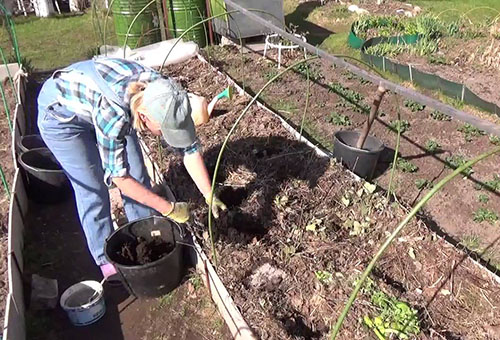
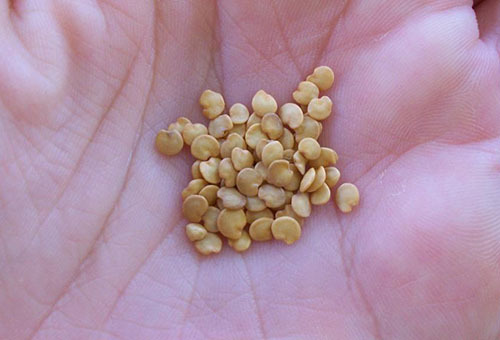
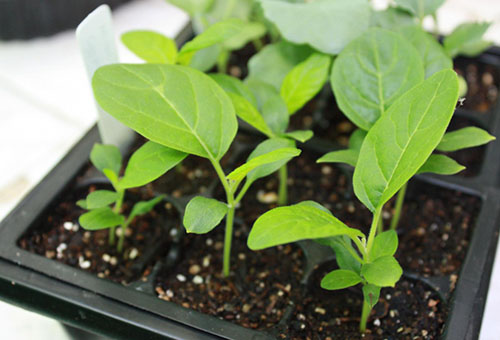
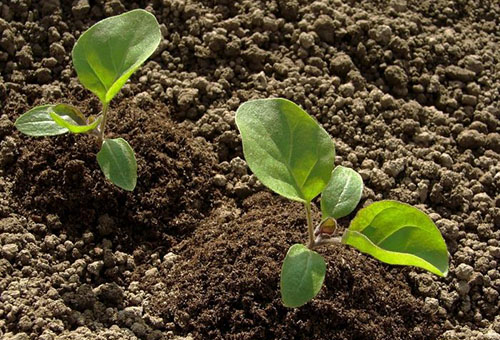
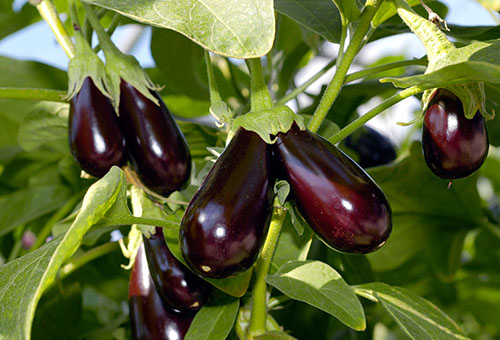





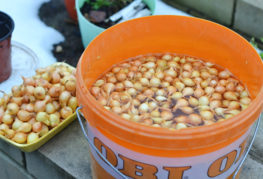
and will be published shortly.